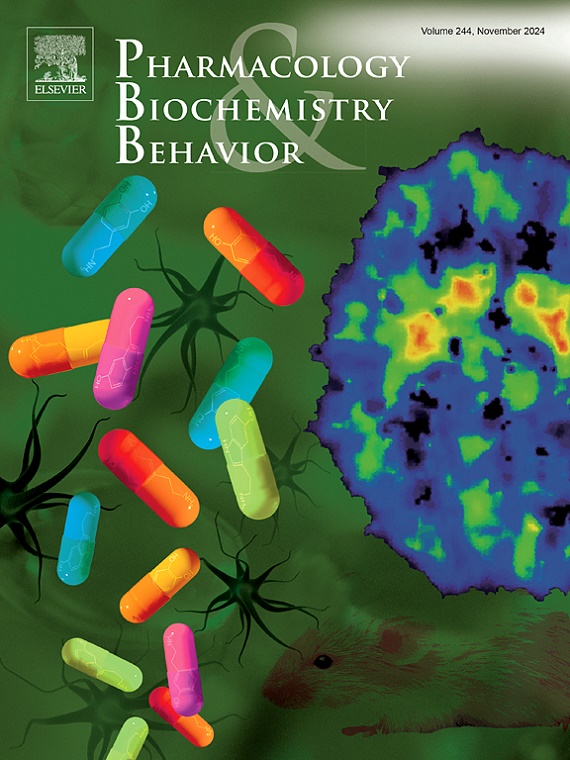Psychostimulant induced behavioral sensitization: The contribution of drug stimuli to context and Pavlovian conditioned stimuli
IF 3.3
3区 心理学
Q1 BEHAVIORAL SCIENCES
引用次数: 0
Abstract
The drug induced enhancement of behavioral stimulation effects with repeated drug treatments is frequently context specific implicating associative processes. Attempts to label these effects as Pavlovian conditioned drug responses have generally been dismissed as it has frequently been demonstrated that the test environment cues alone are insufficient to elicit the sensitized drug response. In this paper evidence will be presented showing that the sensitized drug response can in fact be elicited by test environment cues in a non-drug test. The key reason test environment cues alone are an inadequate conditioned stimulus to elicit the sensitized drug response with commonly used behavioral sensitization protocols is because drug stimulus cues of the drug used to induce behavioral sensitization are conflated with the test environment cues so that the conditioned stimulus has been transformed into a compound conditioned stimulus comprised of the test environment cues co-mingled with the drug stimulus cues In this paper we will present evidence that shows that modifications in the drug testing protocol such as placement of the subject into the test environment immediately after drug administration so that the test environment cues precede the onset of the drug response creates the opportunity for a Pavlovian test environment/drug response association. Also, the use of posttest drug administration can enable the test environment stimulus trace to be selectively paired with the drug response and acquire conditioned stimulus properties and become sufficient to elicit the sensitized behavioral drug response. From a Pavlovian conditioning perspective, repeated pairing of the drug with the test environment enables the conditioned drug response test response to add to the unconditioned drug response to generate a behavioral sensitization effect. Critically, the context needs to be recognized as a conditioned stimulus composite comprised of the test environment cues coupled with the drug generated stimulus cues.
精神兴奋剂诱导的行为敏感化:药物刺激对情境和巴甫洛夫条件刺激的贡献。
在反复用药的情况下,药物会增强行为刺激效应,这种效应往往与特定的环境有关,牵涉到联想过程。将这些效应称为巴甫洛夫条件性药物反应的尝试一般都会被否定,因为经常有证据表明,仅凭试验环境线索不足以诱发敏化药物反应。本文将提供证据表明,在非药物测试中,测试环境线索实际上可以诱发敏化药物反应。在常用的行为致敏方案中,单靠试验环境线索不足以诱发致敏药物反应,其关键原因是用于诱发行为致敏的药物刺激线索与试验环境线索混淆在一起,从而使条件刺激变成了由试验环境线索与药物刺激线索共同组成的复合条件刺激。在本文中,我们将提出证据,证明对药物测试方案的修改,如在给药后立即将受试者置于测试环境中,使测试环境线索先于药物反应出现,从而为巴甫洛夫测试环境/药物反应关联创造了机会。此外,使用试验后给药可以使试验环境刺激痕迹与药物反应有选择地配对,获得条件刺激特性,并足以引起敏感的行为药物反应。从巴甫洛夫条件反射的角度来看,反复将药物与测试环境配对,可使条件性药物反应测试反应与非条件性药物反应相加,从而产生行为敏化效应。至关重要的是,需要将环境视为一种条件刺激复合体,由试验环境线索和药物产生的刺激线索组成。
本文章由计算机程序翻译,如有差异,请以英文原文为准。
求助全文
约1分钟内获得全文
求助全文
来源期刊
CiteScore
6.40
自引率
2.80%
发文量
122
审稿时长
38 days
期刊介绍:
Pharmacology Biochemistry & Behavior publishes original reports in the areas of pharmacology and biochemistry in which the primary emphasis and theoretical context are behavioral. Contributions may involve clinical, preclinical, or basic research. Purely biochemical or toxicology studies will not be published. Papers describing the behavioral effects of novel drugs in models of psychiatric, neurological and cognitive disorders, and central pain must include a positive control unless the paper is on a disease where such a drug is not available yet. Papers focusing on physiological processes (e.g., peripheral pain mechanisms, body temperature regulation, seizure activity) are not accepted as we would like to retain the focus of Pharmacology Biochemistry & Behavior on behavior and its interaction with the biochemistry and neurochemistry of the central nervous system. Papers describing the effects of plant materials are generally not considered, unless the active ingredients are studied, the extraction method is well described, the doses tested are known, and clear and definite experimental evidence on the mechanism of action of the active ingredients is provided.

 求助内容:
求助内容: 应助结果提醒方式:
应助结果提醒方式:


